Yesterday I went to Barnes & Noble to pick up the copies of KAPOW! I ordered last weekend and saw that it was the first day of Educator Appreciation Week.
Being very susceptible to enjoying the perks that come with teaching (there aren't many) I signed up for the Educator's Appreciation Afternoon Tea that was to be held the next day. They promised to raffle off over $500 worth of 'incredible prizes', provide a 'light lunch' and the clincher was that there would be guest authors and illustrators. Oh, AND they would kick up the educator's discount from its usual 20% to 25%! Therefore, if I bought $100 worth of books I would save like...$250! (Joy - that math is for you.)
Now those jaded readers may say that it is just an opportunity for B&N to rev up business and for authors to turn a quick buck. I must admit this was my initial feeling. However, that little devil was silenced by the thought of winning $500 worth of merchandise.
I went this afternoon and thoroughly enjoyed myself. As I walked from table to table I was greeted by employees with "Oh, you're the teacher from New York". I felt like a celebrity as there was obviously a little grapevine gossip playing out. They could not believe that I commute two hours to get to work everyday and I enjoyed playing my part in this scenario. I am a talker after all and once I begin to discuss education and children watch out.
The children's book authors and illustrators were Wendy Pfeffer, Gene Barretta, Joe Kulka, Stephen Heigh, Betty Tatham and John Sciullo. Once I saw their beautiful books my prior resolve to keep a closed wallet was melted and I scooped up five of them. I am a sucker for autographed books and could not help myself. I think my students will really enjoy them too.
 Comedian and talk-show host Joy Behar has teamed up with illustrator Gene Barretta to create a feisty, lovable character in this cheerful, funny picture book. When Max the mixed-breed meets a pack of snobby purebred dogs in the dog run, he can’t understand why they don’t want to play with him and his mongrel friends. Determined to get everyone to play together, brainy Max—who is part poodle, after all—comes up with a way to break the ice between the mixed-breeds and the purebreds. America’s current obsession with designer dogs makes this book as timely as it is lively.
Comedian and talk-show host Joy Behar has teamed up with illustrator Gene Barretta to create a feisty, lovable character in this cheerful, funny picture book. When Max the mixed-breed meets a pack of snobby purebred dogs in the dog run, he can’t understand why they don’t want to play with him and his mongrel friends. Determined to get everyone to play together, brainy Max—who is part poodle, after all—comes up with a way to break the ice between the mixed-breeds and the purebreds. America’s current obsession with designer dogs makes this book as timely as it is lively.
 An authorial debut for illustrator Barretta, Now & Ben aims at the youngest readers, limiting its purview to Franklin as a slightly tubby, jolly inventor and innovator. Each left-hand page describes and illustrates one of Franklin's contributions as we know it ("Now . . . our newspapers are filled with illustrations"); the opposite page goes back in time to reveal the Franklin connection ("Ben . . . was the first to print a political cartoon in America"). Most young children won't grasp the play on the phrase now and then but will zero in instead on the well-chosen examples, which include bifocals and lightning rods as well as lesser-known notions (a rocking chair that churned butter!), all appealingly rendered in Barretta's relaxed, cartoonlike watercolors.
An authorial debut for illustrator Barretta, Now & Ben aims at the youngest readers, limiting its purview to Franklin as a slightly tubby, jolly inventor and innovator. Each left-hand page describes and illustrates one of Franklin's contributions as we know it ("Now . . . our newspapers are filled with illustrations"); the opposite page goes back in time to reveal the Franklin connection ("Ben . . . was the first to print a political cartoon in America"). Most young children won't grasp the play on the phrase now and then but will zero in instead on the well-chosen examples, which include bifocals and lightning rods as well as lesser-known notions (a rocking chair that churned butter!), all appealingly rendered in Barretta's relaxed, cartoonlike watercolors.
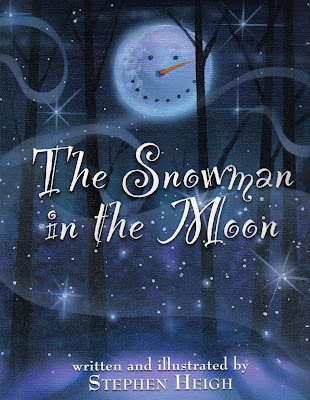 From Foreword Magazine’s 2004 Children’s Book of the Year Finalist Stephen Heigh comes the heartwarming story of The Snowman in the Moon. Beautifully illustrated, Snowman's panoramic outdoor scenes capture the interest and imagination of children of all ages and the inner child in all of us.The story center around a town that has longed for a big snowfall for years without seeing one. One night, as two children are gazing up at the moon wishing for it to snow, the Snowman in the Moon appears to them. They know at that moment something magical is about to happen. However, when they tell their friends and neighbors what they saw, no one believes them.But that evening the Snowman in the Moon visits Woodstream County and blankets the land with a beautiful soft snow. The town discovers the beauty and magic of this special snowfall."If you believe, all things are possible."
From Foreword Magazine’s 2004 Children’s Book of the Year Finalist Stephen Heigh comes the heartwarming story of The Snowman in the Moon. Beautifully illustrated, Snowman's panoramic outdoor scenes capture the interest and imagination of children of all ages and the inner child in all of us.The story center around a town that has longed for a big snowfall for years without seeing one. One night, as two children are gazing up at the moon wishing for it to snow, the Snowman in the Moon appears to them. They know at that moment something magical is about to happen. However, when they tell their friends and neighbors what they saw, no one believes them.But that evening the Snowman in the Moon visits Woodstream County and blankets the land with a beautiful soft snow. The town discovers the beauty and magic of this special snowfall."If you believe, all things are possible."
 A distant howl echoes through the forest, and news quickly spreads that Wolf is coming! As the wolf gets closer and closer, animals run away as fast as they can. Soon the wolf's glowing eyes are peeking through the window, and then slowly, the front door opens...
A distant howl echoes through the forest, and news quickly spreads that Wolf is coming! As the wolf gets closer and closer, animals run away as fast as they can. Soon the wolf's glowing eyes are peeking through the window, and then slowly, the front door opens...
 From School Library Journal: Grade 1-3- This title focuses on one emperor penguin family's survival. The parents' care of their young is central, shown by deft yet perfunctory watercolors depicting a harsh, challenging habitat. The danger of the baby's starvation is emphasized; one adult must keep it protected from the elements and the other must fish for food and return in time to feed it before it dies. Trading places, the caregivers share these duties until the chick is old enough for both adult birds to hunt for food together. A summary of a penguin's life up to the laying of an egg is followed by a section that describes the egg laying and nesting patterns of kings, Ad lies, rockhoppers and little blues.
From School Library Journal: Grade 1-3- This title focuses on one emperor penguin family's survival. The parents' care of their young is central, shown by deft yet perfunctory watercolors depicting a harsh, challenging habitat. The danger of the baby's starvation is emphasized; one adult must keep it protected from the elements and the other must fish for food and return in time to feed it before it dies. Trading places, the caregivers share these duties until the chick is old enough for both adult birds to hunt for food together. A summary of a penguin's life up to the laying of an egg is followed by a section that describes the egg laying and nesting patterns of kings, Ad lies, rockhoppers and little blues.
Barnes & Noble is not the only institution to provide educator discounts.
Borders Books has a 'Classroom Discount Card' that entitles the bearer to 20% off list price on books, music, and VHS for classroom use.Staples has a 'Teacher Rewards' program and a teacher appreciation day late in the summer.
P.S. I did not win the raffle.



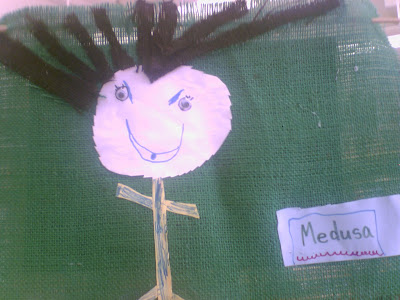

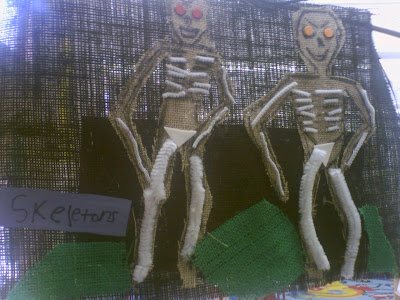

 I think she did this on purpose because although I assured her that my students were experts on the heroes and heroines of Greek Mythology, she expressed her opinion that it was too sophisticated for them. Well, we followed her through the maze of rooms and hallways, up the elevator and down the steps, back into African Art. By this time the children were getting restless and playing “don’t step on the cracks”. This meant that they were looking down rather than straight ahead of them. You know where this is going? Just as I was telling them to watch where they were headed I hear a loud “WHACK”
I think she did this on purpose because although I assured her that my students were experts on the heroes and heroines of Greek Mythology, she expressed her opinion that it was too sophisticated for them. Well, we followed her through the maze of rooms and hallways, up the elevator and down the steps, back into African Art. By this time the children were getting restless and playing “don’t step on the cracks”. This meant that they were looking down rather than straight ahead of them. You know where this is going? Just as I was telling them to watch where they were headed I hear a loud “WHACK” 





 The wonderful thing about my teaching situation is that I work with a co-teacher, Lauren. We have decided through the years that during non-fiction investigations one of us will ‘cover’ the class while the other spends the day (or part of the day) taking an educational trip with one small group of students. In the past this has manifested in Lauren taking trips to The Coney Island Aquarium, Brooklyn Botanical Garden and The Museum of Natural History. I have taken children to the Central Park Zoo, The Bronx Zoo and Times Square.
The wonderful thing about my teaching situation is that I work with a co-teacher, Lauren. We have decided through the years that during non-fiction investigations one of us will ‘cover’ the class while the other spends the day (or part of the day) taking an educational trip with one small group of students. In the past this has manifested in Lauren taking trips to The Coney Island Aquarium, Brooklyn Botanical Garden and The Museum of Natural History. I have taken children to the Central Park Zoo, The Bronx Zoo and Times Square. 







 The juxtaposition of these two texts may seem strange, but as they swirl around in my thoughts placing them side by side seems somehow right. Both circulate around the marriage of theory and practice.
The juxtaposition of these two texts may seem strange, but as they swirl around in my thoughts placing them side by side seems somehow right. Both circulate around the marriage of theory and practice. 







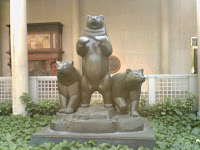




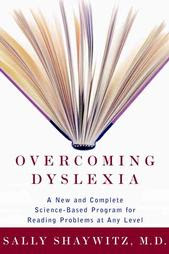
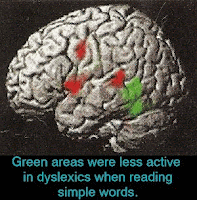
 The great news is that through remedial instruction, dyslexic students can actually ‘rewire’ their brains. With direct, explicit and systematic training in phonological awareness partnered with instruction to improve motivation,
The great news is that through remedial instruction, dyslexic students can actually ‘rewire’ their brains. With direct, explicit and systematic training in phonological awareness partnered with instruction to improve motivation, 



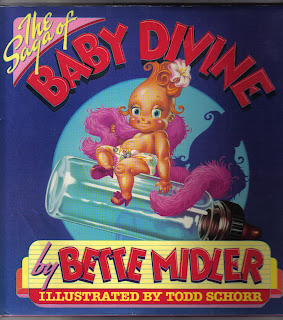
 The above was written by a six year old deaf boy. It depicts a very detailed story that I will relate to you. On the left is Charlie Chaplin – notice the exquisite detail; the easily recognizable mustache, the hat, the walking stick, the out turned feet. Next to Charlie is a woman and they are going to get married. See them holding hands? The heart between them is further evidence. As I sat with this boy I questioned him on the drawing and he told me more, which he added to the picture. They are filming a movie (see the light of the camera above the heart and how it reflects off of his hat). He went further by adding letters to the top of the page. He knew that writing served a purpose and although he has not yet mastered conventional spelling or writing conventions he has made this important connection. This is part of writing development. I am conscious of seeing this piece of writing from the child’s perspective. My belief is that he will continue to progress along the writing continuum. I am happy to be in a position where I can support that. I am a lucky man to be able to watch this development and give whatever assistance I can to aid it.
The above was written by a six year old deaf boy. It depicts a very detailed story that I will relate to you. On the left is Charlie Chaplin – notice the exquisite detail; the easily recognizable mustache, the hat, the walking stick, the out turned feet. Next to Charlie is a woman and they are going to get married. See them holding hands? The heart between them is further evidence. As I sat with this boy I questioned him on the drawing and he told me more, which he added to the picture. They are filming a movie (see the light of the camera above the heart and how it reflects off of his hat). He went further by adding letters to the top of the page. He knew that writing served a purpose and although he has not yet mastered conventional spelling or writing conventions he has made this important connection. This is part of writing development. I am conscious of seeing this piece of writing from the child’s perspective. My belief is that he will continue to progress along the writing continuum. I am happy to be in a position where I can support that. I am a lucky man to be able to watch this development and give whatever assistance I can to aid it. I love the picture above. It is the first page of a six page story written by another student who a short time ago was drawing one page pictures of Superman. His previous work contained primarily a one word label - Superman. His art work has always been impressive. Notice the details in this picture. Some people have their eyes open, others are closed. His sister’s hair is blowing in the back seat; faces are in profile and full on. There is a steering wheel, a flag, the bank is labeled. He is also showing evidence here of his development by writing on the lines and spelling conventionally. Directionality has been learned, the text matches the picture, he is telling about a real event across several pages and beginning to incorporate punctuation. This is great stuff. And the best part is he will keep developing along a path of writing that is pretty much consistent across all beginning writers.
I love the picture above. It is the first page of a six page story written by another student who a short time ago was drawing one page pictures of Superman. His previous work contained primarily a one word label - Superman. His art work has always been impressive. Notice the details in this picture. Some people have their eyes open, others are closed. His sister’s hair is blowing in the back seat; faces are in profile and full on. There is a steering wheel, a flag, the bank is labeled. He is also showing evidence here of his development by writing on the lines and spelling conventionally. Directionality has been learned, the text matches the picture, he is telling about a real event across several pages and beginning to incorporate punctuation. This is great stuff. And the best part is he will keep developing along a path of writing that is pretty much consistent across all beginning writers.